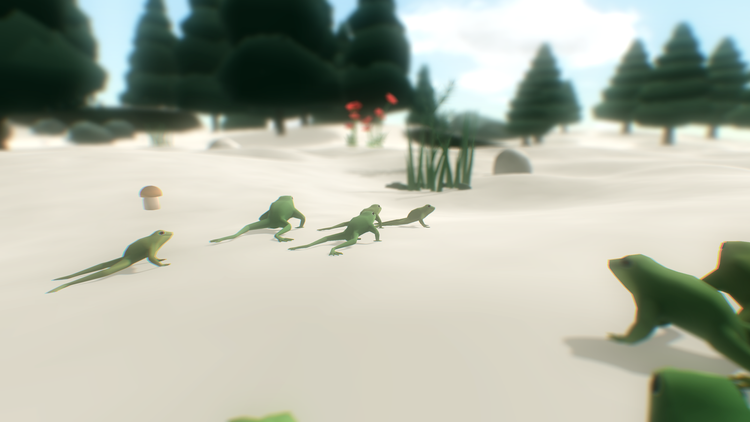A closer look at Halo’s pistol, the most infamous videogame weapon of them all

When we talk about Halo, we tend to think of it in the aggregate, as if it was this singular idea of Halo, rather than a series of entries about super-soldiers blowing up different shit. This is slightly myopic of us, if we’re being honest, as the series has evolved quite a bit. And nothing has changed more than the pistol, the once-holy piece of weaponry that was reinvented as common trash after Halo: CE, then drifted like a child actor through a series of odd career moves. We spoke to Chris King, lead sandbox designer on Halo 5, about the pistol’s fall from grace, and how the misplaced firearm may soon return to its former glory.
///
KILL SCREEN: Let’s talk about the pistol. It has undergone quite an evolution from the almighty firearm it once was in the original Halo.
Chris King, lead sandbox designer of Halo 5: For the most part I think Halo has done a pretty good job of keeping weapon roles consistent. Of course there are some minor changes—magazine size, a slightly modified firing rate.

The one exception is the pistol. The Halo: CE version was tough to master, but it was incredibly rewarding and powerful. The Halo 2 version was toned down quite a bit. No more scope. Not very powerful. Basically it was only viable when dual-wielded.
In fact it was because of dual-wielding that the pistol had to change. Imagine the balance implications if you could carry two of the original Halo pistols at the same time. We are talking total madness!
Then in Halo 3 the pistol again underwent a drastic change. Again it had no scope. But whereas the previous versions were incredibly fast firing, the Halo 3 pistol became a powerful, slow-firing weapon.
“For a weapon to be meaningful, it needs to stand out”
For Halo 5, we really wanted to push it closer toward the original Halo: Combat Evolved pistol again, so I suppose we are continuing the trend of switching it up.
You mentioned dual-wielding, but why has the pistol continued to change beyond that?
Well, in Halo: CE, part of what made the pistol’s role unique was that it was precise. It did headshots. And had some range. But with the introduction of other precision weapons in later games—DMR, Carbine, the Battle Rifle—the roles began to overlap. This really reduced the Pistol’s effectiveness and desirability.

When I spoke with Hardy LeBel, designer of the original Halo’s multiplayer combat, he told me how he designed a matrix to balance the alien weapons and the super-soldier weaponry. Do Halo’s guns still subscribe to similar design principles?
The process of balancing Halo has mostly remained the same. Every weapon in every Halo game is designed to have a unique role. We balance the weapons by building out a comprehensive matrix which identifies how weapons should win or lose against one another.
What has changed is the complexity of the balance. It is much more time-intensive and complicated.
“you don’t want the outcomes to be binary”
Think of it like this. To balance precision weapons in Halo: CE, you only had to worry about the pistol and sniper rifle. Pretty simple. But in the next game, we not only had to test each weapon against one another, but also account for all of the different permutations for dual-wielding. Pistol versus pistol. Pistol versus dual-wielded pistols. Pistol versus battle rifle. And so on.
It gets even more complex with Halo 5.
What’s the raison d’être of design in Halo?
One of the things we always talk about internally is meaningful player choice. We want to give players autonomy in how they play the game. Meaningful means a lot of things. For a weapon to be meaningful, it needs to stand out from other weapons.

Take the spartan laser. It is meaningful because it is incredibly lethal against vehicles, especially big heavy vehicles.
But another part of being meaningful is having tradeoffs and weaknesses.
So the spartan laser has several big ones. It’s incredibly difficult to use against infantry, for example, because of the long charge-up time. Also, it projects a tell—a red targeting laser. This not only telegraphs to other players that you are charging it up. It also gives away your location.
So I think the real secret is having the strengths and weaknesses overlap with the strengths and weaknesses of the other weapons. But you don’t want the outcomes to be binary either. That’s part of what makes the choice interesting. It’s a gamble, not a guarantee!
///
Header image via Brian.



